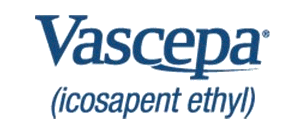Amarin v. Hikma: Federal Circuit reverses Inducement Dismissal in Skinny-Label Case
Patent – Patently-O 2024-06-25
by Dennis Crouch
Amarin Pharma, Inc. v. Hikma Pharmaceuticals USA Inc., No. 2023-1169 (Fed. Cir. June 25, 2024).
This is another “skinny label” generic pharmaceutical patent case. The basic setup involves a drug that has several different approved uses; with the branded manufacturer holding patents covering only some of the uses. The generic company is then permitted to sell the drug, but is labelled only for non-patented uses. These labels are known as carve-out or “skinny” labels under 21 U.S.C. § 355(j)(2)(A)(viii).
It is inevitable that people will purchase and use the generic drugs for the patented uses, and that the generic distributer will be accused accused of inducing those infringing acts. Although the generic typically makes a profit on these sales, it those profits pale in comparison to the profits lost by the branded company.
Amarin v. Hickma highlights some of the challenges that generics are facing when marketing drugs with these carved-out labels. One difficulty is that the FDA severely limits what the generic can say about the drug and its uses, and the carve-out is generally based upon statements made by the patentee. Here, the court follows a label-plus approach. The skinny label itself will not be enough to show inducement, but that evidence can be combined with other evidence (such as marketing) to prove liability.
The Patents at Issue. The asserted patents, U.S. Patent Nos. 9,700,537 and 10,568,861, are directed to methods of using icosapent ethyl to reduce the risk of cardiovascular events. Icosapent ethyl is the active ingredient in Amarin’s Vascepa drug, originally approved by the FDA in 2012 to treat severe hypertriglyceridemia (the “SH indication”). The patents covering that treatment are no longer in force. In 2019, Amarin obtained FDA approval to market Vascepa for reducing cardiovascular risk (the “CV indication”) and listed the asserted patents in the Orange Book. As the court noted, the CV indication is commercially significant, accounting for over 75% of Vascepa’s $1.1 billion in 2020 sales. Hikma’s skinny label generic was approved by the FDA — omitting the CV indication. That said, the exact same dosage used for SH will also treat CV.
Although not quite a Trojan Horse, the case brings that old story to mind. The generic drug with its ‘skinny label’ appears benign – approved only for the less financially lucrative non-patented uses, but with the latent potential ready to emerge.
The key issue before the Federal Circuit was whether Amarin’s complaint plausibly alleged that Hikma actively induced infringement under 35 U.S.C. § 271(b), despite Hikma’s skinny label generic omitting the patented CV indication. Reversing the district court’s dismissal, the Federal Circuit held that the totality of Amarin’s allegations—based on Hikma’s label, press releases, and website—plausibly pleaded induced infringement at the motion to dismiss stage.
The court explained that while Hikma’s label standing alone likely did not encourage infringement, other aspects of the label combined with Hikma’s public statements could support an inducement claim. For example, the label allegedly described clinical studies involving patients with cardiovascular risk factors covered by the asserted patents, which could be interpreted as a teaching to prescribe the drug for the patented use. In addition, Hikma’s original generic label included a limitation of use – saying that the drug was not approved for the CV indicated. However, once Amarin received FDA approval, Hikma removed the limitation of use. In its decision, the court explained that arguably could communicate to physicians that the drug is appropriate for the patented use.
Importantly, the court emphasized that Amarin’s inducement theory relied not just on Hikma’s label, but also its press releases and marketing materials. Hikma’s pre-launch press releases referred to its product as the “generic equivalent to Vascepa” and a “generic version of Vascepa” without stating it was AB-rated only for the SH indication. The releases also touted Vascepa’s sales figures, which were largely attributable to the CV indication. Hikma’s website advertised the drug in the broad category of “Hypertriglyceridemia.” Drawing all reasonable inferences in Amarin’s favor at the motion to dismiss stage, the appellate panel found it plausible that Hikma’s statements could encourage physicians to prescribe its drug for the patented CV uses.
The Federal Circuit distinguished Takeda Pharms. U.S.A., Inc. v. West-Ward Pharm. Corp., 785 F.3d 625 (Fed. Cir. 2015), noting that this case involved not just a skinny label, but also Hikma’s public statements as a basis for inducement. And, citing GlaxoSmithKline LLC v. Teva Pharms. USA, Inc., 7 F.4th 1320 (Fed. Cir. 2021), the court reiterated that the content of a label and marketing materials presents a factual dispute not suitable for resolution on a motion to dismiss.
Although incremental, Amarin v. Hikma adds to the risk that generic manufacturers face when using a skinny label — particularly when their marketing approach is not tightly controlled; and any GC will admit that their sales and marketing teams are some of the most difficult to control.
